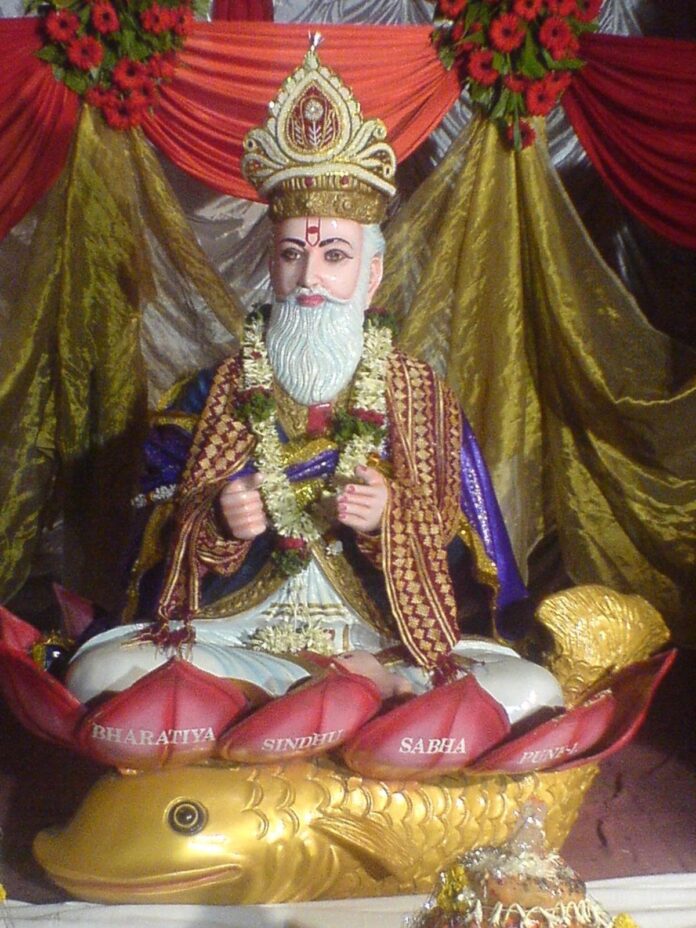Cheti Chand is an auspicious festival celebrated by the Sindhi community around the world to mark the beginning of the Sindhi New Year. This vibrant festival holds deep cultural, religious, and historical significance, embodying a sense of renewal, prosperity, and unity among Sindhi people.
Origin of Cheti Chand
Cheti Chand is observed on the second day of the Chaitra month (March-April) in the Hindu lunar calendar, which coincides with the festival of Ugadi in some regions of India. The festival is dedicated to the birth anniversary of Ishtadeva Uderolal, popularly known as Jhulelal or Lal Sai, who is revered as the patron saint of the Sindhi community.
Legend has it that Jhulelal was born to rid the Sindhi people of persecution and injustice during the reign of a tyrannical ruler named Mirkhshah. Jhulelal’s teachings emphasized the values of tolerance, unity, and compassion, inspiring hope and resilience among the Sindhi community.
Rituals and Customs
Cheti Chand is celebrated with great enthusiasm and fervor by Sindhi families. The festivities commence with prayers and offerings at Jhulelal temples, followed by traditional rituals and cultural performances. Devotees gather to sing devotional hymns (bhajans) and recite verses from the Granth Sahib, the holy scripture of Sindhi Hindus.
One of the most cherished customs of Cheti Chand is the symbolic procession (jyot yatra) of an oil lamp (jhota) representing the divine light of Jhulelal. The lamp is carried in a decorated palanquin amidst singing and dancing, symbolizing the triumph of good over evil.
Cultural Significance
Cheti Chand holds immense cultural significance for the Sindhi community, serving as a reminder of their rich heritage and identity. The festival fosters a sense of unity and solidarity among Sindhi people, transcending geographical boundaries and generational divides.
Through traditional songs, dances, and culinary delights, Cheti Chand showcases the vibrant cultural tapestry of Sindhi traditions. Special dishes such as sweet rice (tairi), dal pakwan, and sweets like singhar ji mithai are prepared and shared among family and friends, symbolizing abundance and prosperity.
Also Read: Sushmita Sen opens up about wedding plans, being friends with her exes
Celebrations Worldwide
Cheti Chand is celebrated not only in India but also in Sindhi communities across the globe, including Pakistan, the United States, Canada, the United Kingdom, and other countries with significant Sindhi populations. The festival serves as a unifying force, bringing together Sindhi diaspora to honor their shared roots and values.
Spiritual Reflection and Renewal
Beyond its cultural aspects, Cheti Chand encourages spiritual reflection and renewal. It inspires devotees to embody the virtues of compassion, tolerance, and resilience exemplified by Jhulelal. The festival instills a sense of optimism and hope for the coming year, fostering a spirit of positivity and growth.
In conclusion, Cheti Chand is much more than a New Year celebration for the Sindhi community—it is a time-honored tradition that encapsulates the values of faith, unity, and cultural pride. By commemorating Jhulelal’s teachings and embracing Sindhi customs, Cheti Chand strengthens the bonds of kinship and promotes harmony and prosperity in the Sindhi community worldwide.







